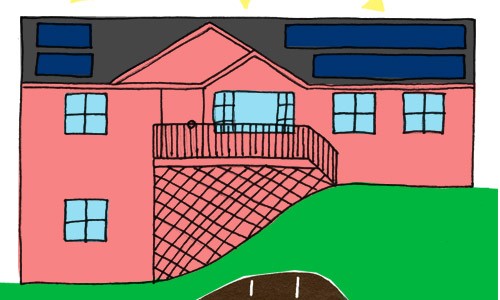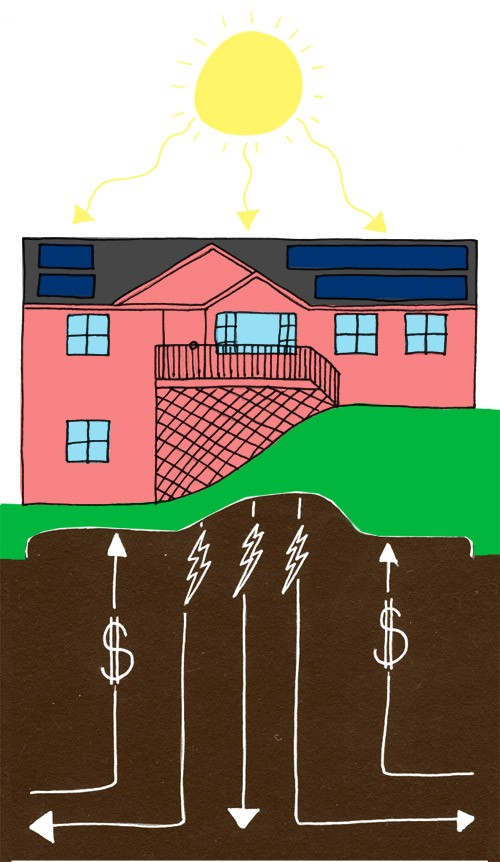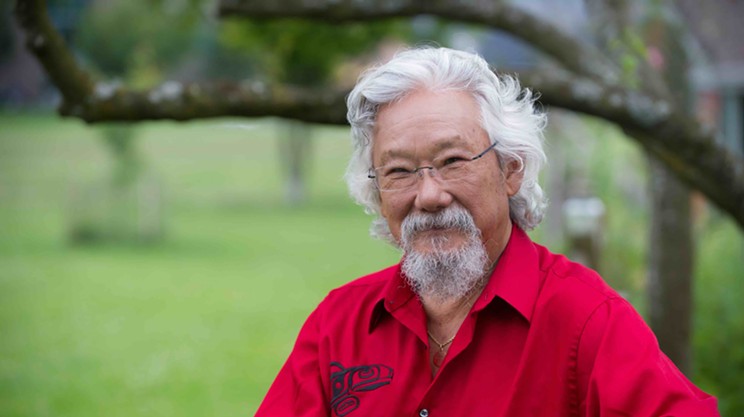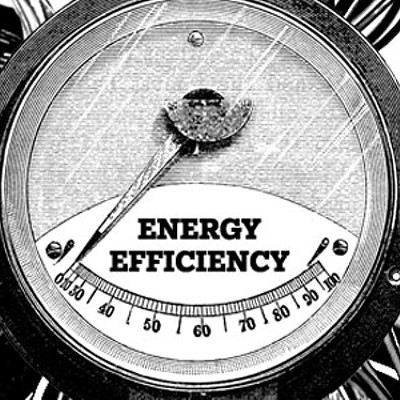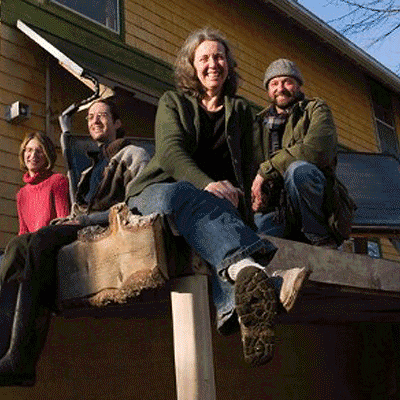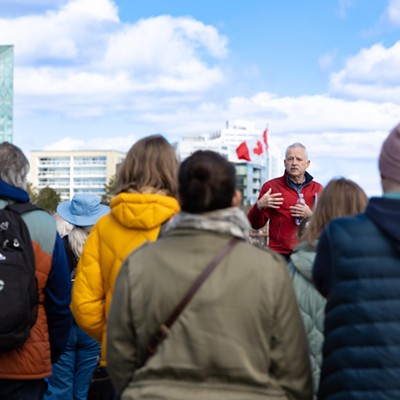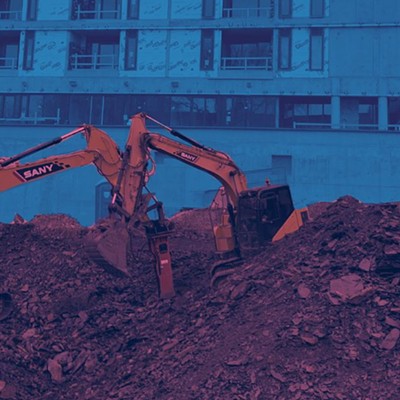Builders may differ on what constitutes environmental house-building, but at least there's a market for more sustainable shelter.
What do you think?"
Duncan Cann asks me the question after a tour of the EcoPlusHome, off Main Street in Dartmouth. Cann is the general manager on the building and upcoming sale of the 1,500-square-foot two-level house, a project of Maple Leaf Homes and Patterson Sales.
It reminds me of some of the nicer homes I played in as a child in the 'burbs. It has three-and-a-half bathrooms, spacious basement rec room, garage, air conditioning--- even old-school Formica countertops.
Cann nods. "This is a modern home and you've got a geothermal well, on the roof you've got 20 solar panels and two solar-thermal panels so you're producing your hot water, electricity, heating, air conditioning and we have a Venmar air exchanger and the insulative qualities. So combined everything is a superior product."
The house has mainstream appeal by design. "We set it up directly for family use," Cann says. It will be listed for $395,000, well above a typical junior executive home in Dartmouth, but cheaper than a typical celebrity green home. "We wanted the best energy-saving products at the best price," Cann says. "A lot of these homes, the prices are out of reach."
The strategy is important if energy-efficient housing is to become the norm, but not every builder agrees with the tactics. "EcoPlusHome is primarily a technological fix," says Shawna Henderson. She's CEO of Bfreehomes Design and a green builder with decades of experience. "It's not necessarily the most cost-effective approach to creating a house that requires very little energy input."
Henderson says for true cost effectiveness the primary focus should be sealing the building envelope---preventing air leakage and maximizing insulation. "It's always cheaper to save a Watt than to make a Watt."
Cann hopes to sell the place to an eager family willing to let him monitor energy use and emissions saved for a year and publicize the data. He wants to show the masses they can have homes that don't rely on fossil fuels. "Oil's not going to be around forever," he says.
While the buyers will take an upfront hit in cost, there are long-term savings. Cann says a comparable home on oil and coal could easily cost $3,000 in annual heat and electric. When I visit the house, it's producing significantly more energy than it's using. "The biggest feature on one of these homes is we're selling power to Nova Scotia Power," Cann says.
The house is expected to produce 15.5 fewer tonnes of greenhouse gas emissions per yer than its carbon-dependent counterparts. The solar hot water alone has saved 3,276 pounds since August, Cann tells me, reading off a monitor in the basement.
The house is also heavily insulated. "I did two-inch foam insulation underneath the concrete floor, two-inch foam insulation on the outside of this wall," says Cann. He says the basement has an R-value (thermal resistance) of 43 with an R29 on the main floor. The ceiling is R60.
Henderson questions those numbers. "A typical insulated concrete form has R20 to R24," she says. "Adding two inches of type IV foam is another R10. At best, that's R34," she says.
The house was given an EnerGuide rating of 94 out of 100 in August, which made it the most energy-efficient home in the province. It's also got large south-facing windows to maximize natural lighting, and all energy-saving appliances.
Henderson says that the EnerGuide rating system "is skewed to high-efficiency mechanicals and photovoltaics." She'd prefer to see green homes that first prioritize energy-use reduction, then look at how energy is produced.
Cann is part of what he sees as a growing awareness of energy-efficiency in home building. Efficiency Nova Scotia also commissioned two demonstration houses---one in Dartmouth and one in Lower Sackville---built to a similar EnerGuide rating.
Cann notes that EcoPlusHome was built without government money, to show that there is money in green. It's not necessarily the most sustainable house on the market when you consider footprint of production--- supplies were sourced based on affordability and quality rather than minimizing the impact of manufacturing, shipping and eventual disposal.
But for an eco-curious family without the time, knowledge or inclination to do the research or build their own, a pre-made high-efficiency home has considerable appeal.

